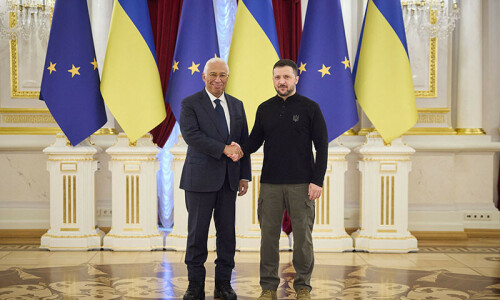ISLAMABAD, Nov 15: Increasingly high-risk behaviour among the youth has prompted the National Aids Control Programme (NACP) and the ministry of education to impart AIDS prevention education in public schools from January.
Through a partnership with the ministry of education, NACP would be rolling out life skills in schools to ensure young people have information about protecting themselves from the devastating disease, said Unicef representative Martin Mogwanja at the launching ceremony of the World Aids Day 2007 being celebrated with the theme: “Keep the promise leadership”. NACP programme manager Dr Asma Bukhari told this reporter that master trainers have already been trained and the programme would be fully functional by January.
The World Aids Day is celebrated on December 1 but month-long activities focusing on creating awareness about the disease among youth have been planned.
Pakistan with some 85,000 people living with HIV and Aids is considered as low prevalence but a high-risk country. The disease is stigmatised in the country and sharing information is considered a taboo. Resultantly, young people often lack access to essential information about HIV transmission and the means to protect themselves from the virus. The Unicef official warned that the youth in the country were engaged in high-risk behaviour.
Half of the country’s 160 million population is less than 24 years of age and highly vulnerable to the infection.
He suggested that the best possible way to pre-empt an outbreak of Aids epidemic in the country was through prevention by providing these young people with information on how to protect themselves and their peers.
To emphasise the risk confronting the youth because of high risk behaviour, Mr Mogwanja shared statistics showing that 3 per cent of the injecting drug users were youth of less than 20 years of age, 11% of the female sex workers were of 15-19 years, while 23% of the male sex workers and transsexuals were also in the same age group.
Most of these people, he said, get involved in the risk behaviour much before turning 15.
NACP is currently mapping children and adolescents most at risk and particularly vulnerable to HIV in seven districts.
Paediatrics Aids: There are some 1,700 children in the country, who might have acquired the disease from their HIV mothers. This constitutes about 2% of the country’s population living with HIV and Aids.
The numbers, though small, are a serious warning for the worst to come because this relatively new phenomenon of AIDS among children could aggravate given that 50% of injecting drug users are married.














































Dear visitor, the comments section is undergoing an overhaul and will return soon.